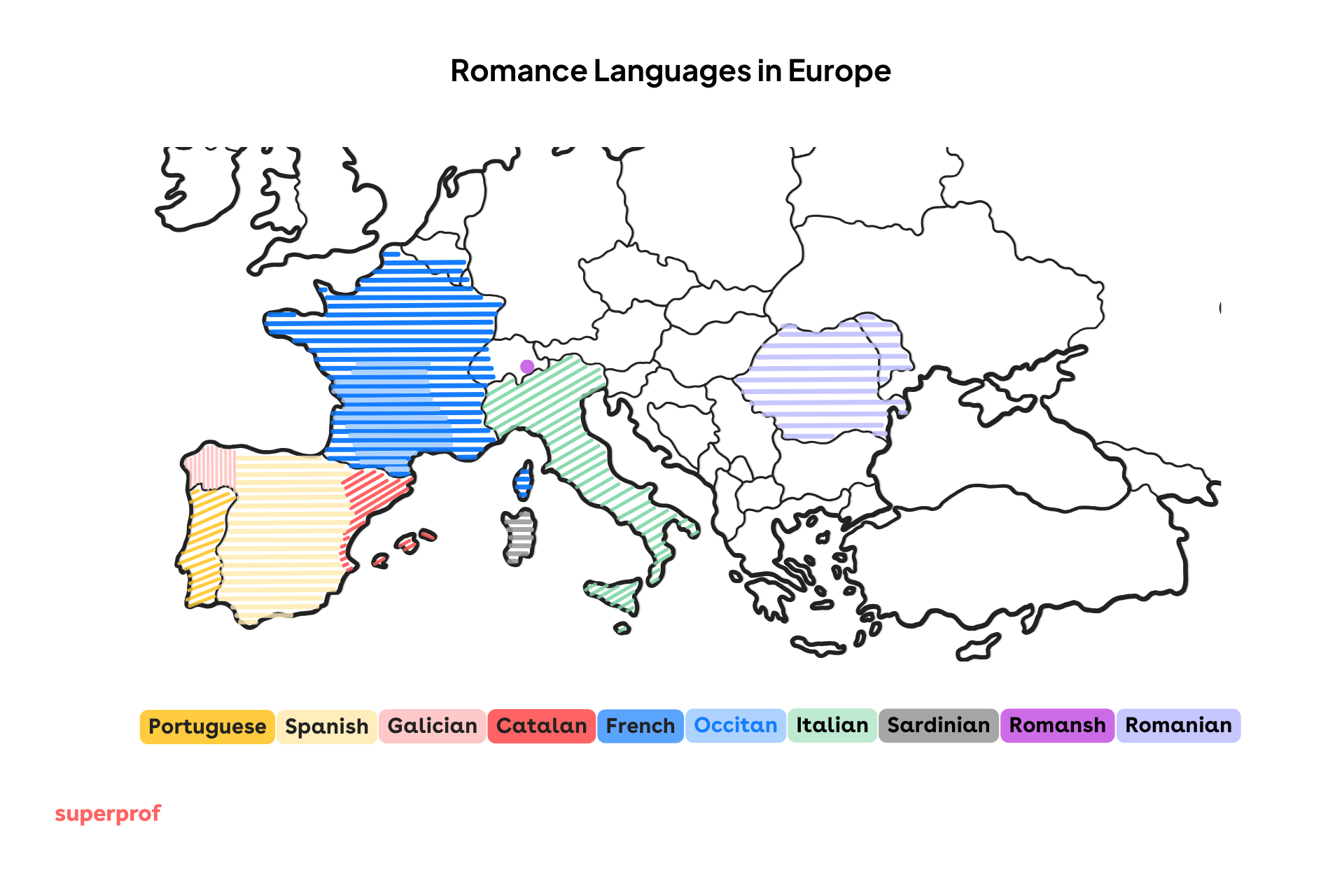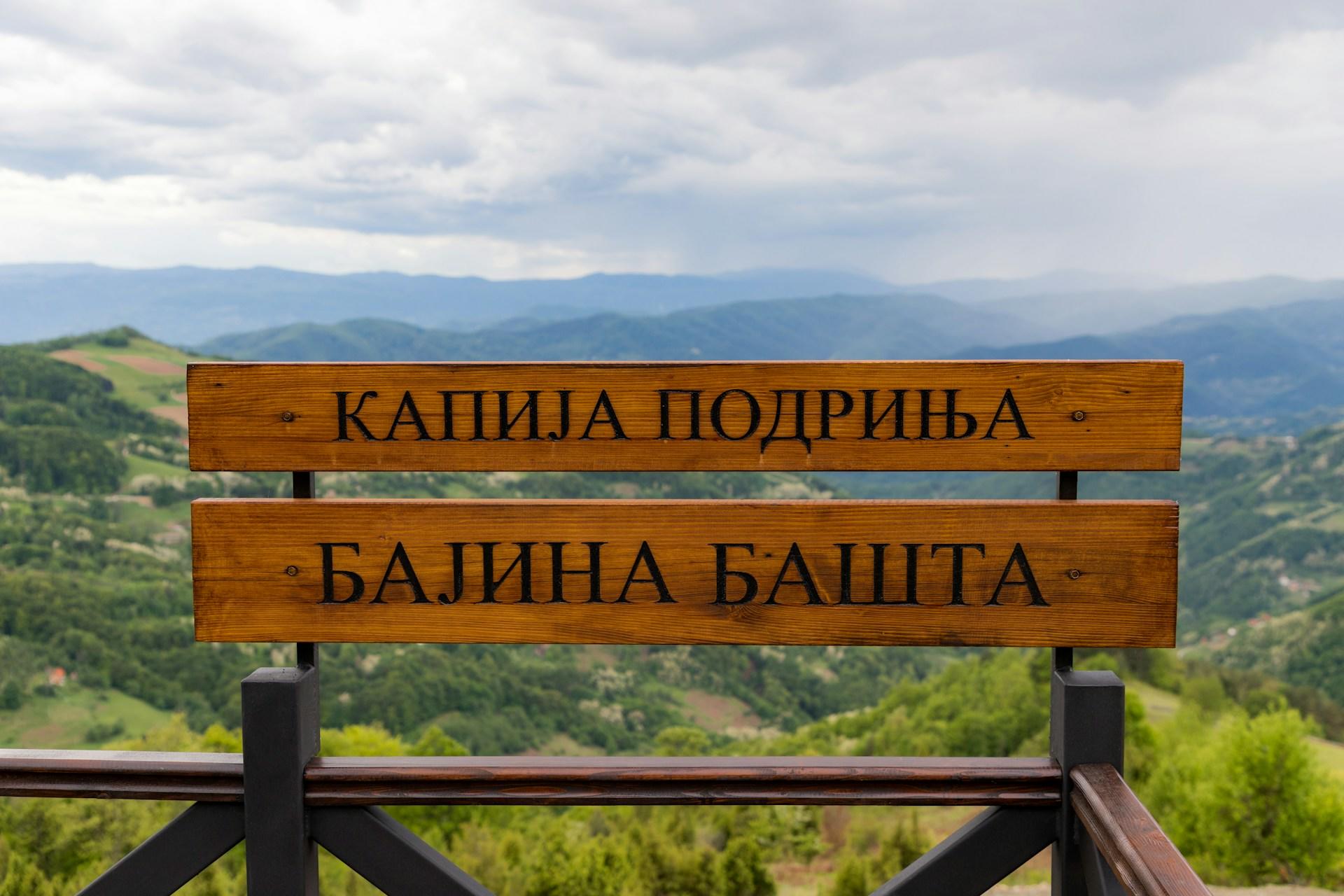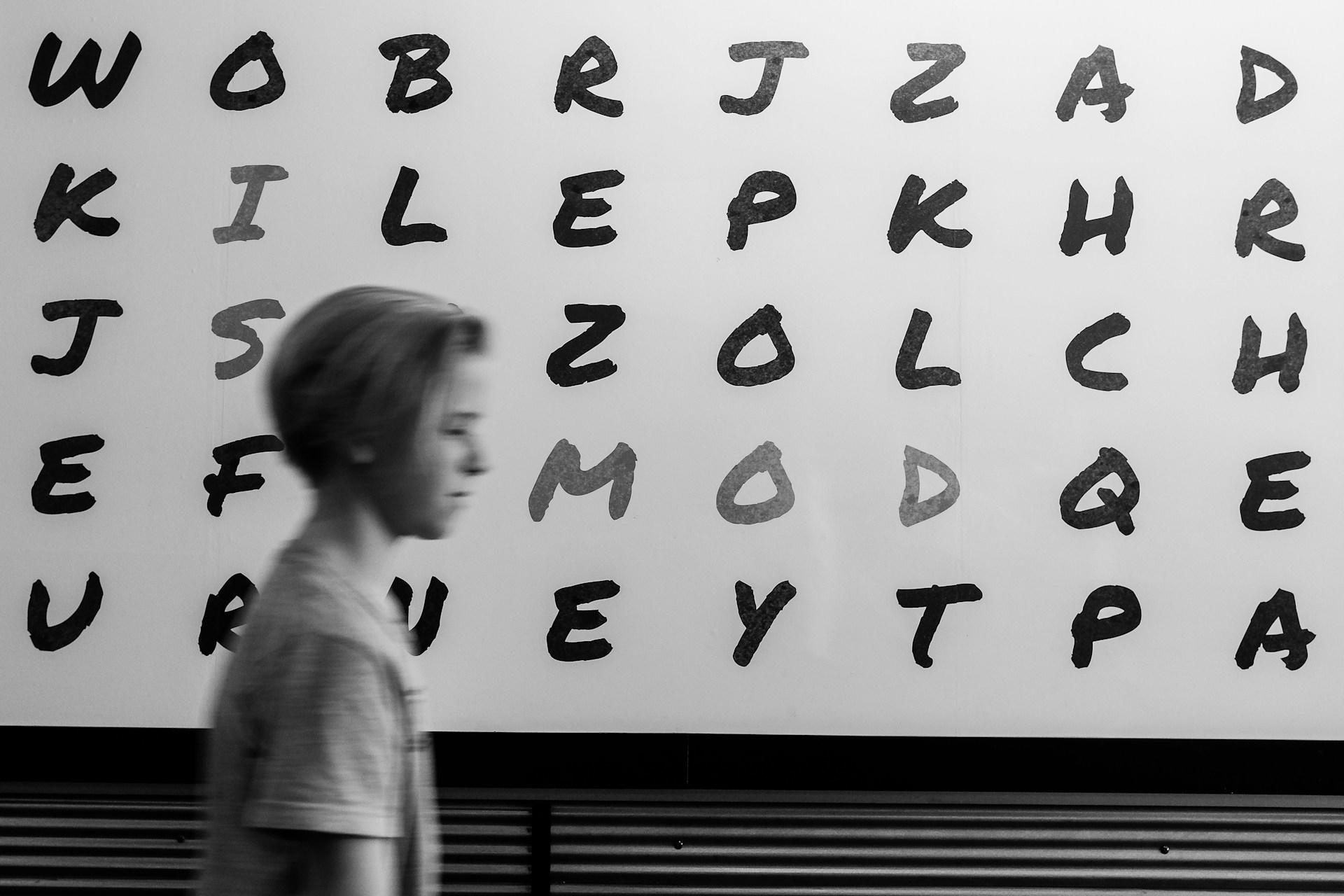Do you know what Shakira, José Mourinho, and Carla Bruni have in common? Apart from being celebrated public figures, they can speak more than one Romance language, in addition to English.
The influence of the Romance languages is closer than you think. We're pretty sure you would have used or heard some phrases in these languages in your everyday life, thanks to the languages' roots in Latin. To get started, here's a quick overview of the Latin derived languages that we'll explore in further detail in this article:
| Language | Region(s) Where Spoken | Approx. Native Speakers | Notes |
|---|---|---|---|
| Spanish | Spain, Latin America, Equatorial Guinea, U.S. | ~485 million | Widely spoken globally, many regional varieties. |
| Portuguese | Portugal, Brazil, parts of Africa (Angola, Mozambique, etc.) | ~230 million | Brazil accounts for most speakers. |
| French | France, Belgium, Switzerland, Canada (Quebec), Africa, Caribbean | ~80 million | Major international language, strong global presence. |
| Italian | Italy, Switzerland, small communities abroad | ~65 million | Strong regional dialects; standard Italian based on Tuscan. |
| Romanian | Romania, Moldova | ~25 million | Preserves features close to Latin; influenced by Slavic neighbors. |
| Catalan | Catalonia, Valencia, Balearic Islands, Andorra | ~9 million | Official in Andorra; distinct from Spanish. |
| Occitan | Southern France, Monaco, small parts of Italy and Spain | ~2 million (declining) | Historic language of troubadour poetry. |
| Galician | Northwestern Spain (Galicia) | ~2.5 million | Closely related to Portuguese. |
| Sardinian | Sardinia (Italy) | ~1 million | Considered the closest living language to Latin. |
| Romansh | Switzerland (Graubünden canton) | ~40,000 | One of Switzerland’s official languages. |

Why Are They Called Romance Languages?
But first, let's delve deeper into the world of Romance languages. The word "Romance" here has nothing to do with love, but it is derived from the Vulgar Latin term Romanicus, which refers to all things Roman.
A spoken form of Latin that is more colloquial as compared to classical Latin, which is usually used in literature, official documents, and upper-class society. Vulgar Latin is mostly used by regular people like soldiers and is less strict in terms of grammar.
It was specifically a reflection of the rise of the Western Roman Empire, during which Latin became a dominant language that spread across regions and nations. The spread took place mostly across Europe but also outside of the old continent, through military conquests and colonisation. Latin language was not fixed but it evolved and played a part in shaping the present local languages and dialects of the countries and regions — leading different areas to develop their distinguished "Romance" language.
Here are some of the major Romance language groups classified based on the geographical regions of Europe:
- Ibero Romance: Portuguese, Galician, Spanish, Catalan
- Gallo Romance: French, Occitan, Romansh
- Italo-Romance: Italian, Sardinian
- Balkan-Romance: Romanian

The Origins of Latin and The Roman Empire
Latin, the vehicular language of the Roman Empire, was born in Latium, a region in central Italy.
The Roman civilisation rose thanks to its incredible capacity to learn and imitate the technics and knowledge originating from other regions in the Italian peninsula, notably from the Etruscans.
When the Romans imposed Latin as the universal language of the Empire, many italic languages were still spoken in Italy: Oscan, Umbrian, Volscian, Marsian, Sabine, South Picene and more.
The dominium of the Roman Empire generated a Latinisation of the Italian peninsula and many of those dialects stopped being used while others survived.
What Are The 5 Main Romance Languages?
In this article, we'll focus on the world's five most widely used romance languages. Originating from Europe with rich linguistic histories, these languages are also recognised as official languages of the European Union today. However, their influence extends far beyond the continent.
🇪🇸 Spanish
Do you know that Spanish is the most spoken native language globally after Mandarin Chinese? With about 500 million native speakers, this automatically makes it the most spoken Romance language in the world.
The Iberian Peninsula was conquered by the Romans in 228BC. There, vulgar Latin that emerged after the Roman colonisation gave way to many other dialects:
- Castillan
- Catalan
- Andalusian
- Extremaduran
- Murcian
- Aragonese
- Galician
- Portuguese
After the fall of the Empire, the Iberian territories were conquered by Berber soldiers coming from North Africa. From the 8th century up until the Treaty of Grenada, which was signed in 1491, the Iberian Peninsula was home to a large population of Umayyads and Arabs.
Castilian (the official language of Spain) was greatly influenced by 700 years of cohabitation with Arabic languages. Catalan, which is spoken in Catalonia (region of Barcelona), is derived from the French Occitan language and is often easier for French-speaking people to understand.
In Portugal and Spain, the Latinisation process was fairly swift, according to historians. The huge number of soldiers and civil servant that the Roman Empire dispatched to the newly conquered territories of Iberia seem to have been the main factor for this.
As a language that evolved from Vulgar Latin on the Iberian Peninsula, Spanish is most widely spoken in Mexico rather than Spain — a surprising fact to many. That's because Mexicans began to adopt the Spanish language due to Spain's colonisation of the country in the 16th century.
One example of a famous Spanish phrase: "Que será, será", which means whatever will be, will be.
🇵🇹 Portuguese
Next, we have Portuguese, which originated in Portugal. This language also shares several similarities with Spanish, in that they both evolved from the Ibero Romance language group, and the majority of its million speakers live outside Europe.
Important note: both of these countries were active during the Age of Exploration during the 16th century.
Currently, Brazil has the largest Portuguese-speaking population, making it the most spoken Romance language in South America.
Due to these different geological locations, there is a difference between European Portuguese and Brazilian Portuguese in terms of vocabulary, accents, and grammar.
🇫🇷 French
Moving on, we have the French language, which is often associated with romantic love due to its association with its romantic landmarks and ambience of the city of love — Paris.
Out of the many Romance languages, French has the most distinctive pronunciation from its Latin roots. It evolved from the Gallo Romance group, more specifically the Latin spoken in Gaul (Gallia), a region in Western Europe.
Gaul was invaded and conquered by Julius Caesar, (100-44BC). Consequently, the French language, like any of the other Romance languages, evolved from Latin while assimilating words from the Gaulish, Frankish or Germanic languages.
Even though the French language was standardised as soon as the 16th century, two major romance dialects coexisted in France. The Oïl language in the North, the Oc language in the South and the Franco-Provencal language in the Southeast of France, North of Italy and in Switzerland.
Many French words, some of which made their way to English, have a Latin locution and phonemes dating from the Antic Rome.
Apart from France and other European countries like Belgium and Switzerland, French is also widely used in North America (especially in Quebec, Canada), and by several million speakers in African countries (Congo and Senegal) due to France's colonial history.
🇮🇹 Italian
Of course, we can't miss out on the closest Romance language to Latin — Italian.
The Italian language belongs to the Italo-Dalmatian language family, which also includes Sardinian, Tuscan, Venetian, Istian, Calabrese, Sicilian and Corsican.
All of the Italic languages have roots in Greek (Greeks had many colonies in Italy), but most of their origins come from Latin. Many of the dialects mentioned above still survive today and are classified as Romance languages.
While the official language of Italy was only set when the country unified in 1861, many other Italian dialects have a considerable number of native speakers.
| Language | Native speakers | Dialects of the language |
|---|---|---|
| Italian | 60,000,000 | Tuscan |
| Central Italian | 5,700,000 | Romanesco, Sabino, Marchigiano |
| Neapolitan | 3,000,000 | Abruzzese, Cosentino, Bari |
| Sicilian | 4,700,000 | Salentino, Souther Calabrian |
It retains the most features of Latin, especially in terms of grammar and vocabulary.
Latin
- Pater (Father)
- Aqua (Water)
- Lux (Light)
Italian
- Padre
- Acqua
- Luce
Due to the influence of the Renaissance period, Italian is also widely used in literature and classical music terminology. For example, famous Italian artists like Dante became famous for their literary masterpiece, the Divine Comedy.
Additionally, Italian is also the official language of the Vatican City, which oversees the Roman Catholic community in the world.
🇷🇴 Romanian
Romanian is often considered the outlier of the five main Romance languages because it is the most geographically isolated from the rest, in Eastern Europe. While Romanian preserved its Latin roots, it does have a Slavic influence. As Asan (Bulgarian leader) crossed the Danube into Romania, he imposed the Cyrillic alphabet, and so Romania used it in the XIV - XV centuries until 1862, mostly for diplomatic documents, manuscripts, inscriptions, and books.

The Eastern part of the Romance languages includes four languages derived from Latin, which are spoken in Romania and Moldavia:
- the Daco-Romanian
- the Istro-Romanian
- the Aromanian
- the Megleno-Romanians
According to linguistic rules, Latin vocabulary incorporated in the Albanian and Greek languages is also to be considered an Eastern Romance language.
These four languages originate from the Romanian dialects that were spoken before the rule of the Roman Empire in the regions north of the Jirecek line, which delimits the area of influence of the Romans until the 4th century AD.
These regions included the current countries of Romania, Moldavia, Albania, Serbia, Bosnia and Croatia.
In the 19th century, scholars in Romania reintroduced the Latin alphabet to the Romanian written texts.
In the meantime, check out some inspirational Latin quotes.
Key Characteristics of Romance Languages
While each Romance language is unique, they generally share several similarities when we look at them collectively.
📖 Shared percentage of Latin-rooted vocabulary
As these languages are primarily derived from Vulgar Latin, this means they share a common linguistic ancestry, even if they're less mainstream ones like Catalan or Sardinian, though the spelling and pronunciation may differ.
Refer to the table below for an overview:
| English | Latin | Spanish | Portuguese | French | Italian | Romanian |
|---|---|---|---|---|---|---|
| Mother | māter | madre | mãe | mère | madre | mamă |
| Sun | sōl | sol | sol | soleil | sole | soare |
| Star | stella | estrella | estrela | étoile | stella | stea |
| Book | liber | libro | livro | livre | libro | carte |
| Fire | focus | fuego | fogo | feu | fuoco | foc |
| Name | nomen | nombre | nome | nom | nome | nume |
From the table, you can tell which romance language is the closest to Latin, and which is the furthest.
👫 Gendered nouns
Like Latin, all five main Romance languages have gendered nouns, categorised into masculine and feminine.
Romanian is the only Romance language with a third neuter (neutral) gender.
Several grammatical rules determine the grouping of nouns in languages such as the noun's ending, the subject of the noun itself, and also specific nouns which involve names of countries, or days of the week, for instance.
🔡 Application of Latin alphabets in writing systems and vowels
Finally, there's also the legacy of the Latin alphabet system, which we are all familiar with.
However, the 26 alphabet system that we know today in the English language is an evolution of the original classical Latin Alphabet.
Did you know that alphabets like J, U, W, Y, and Z did not exist in classical Latin texts?
It was not until later that these alphabets were added to form the modern Latin alphabet, expanding to help certain phonetic pronunciation and accents. The vowels (a, e, i,o, and u) are still used in standard languages today.

Today, Italy still retains the usage of the 21 Latin alphabet system in their language as it does not have specific phonetic sounds that require the use of J, K, W, X, or Y in their native words.
On the other hand, Spanish, Portuguese, French, and Romanian all use the modern 26-letter Latin alphabet system. A special mention is that Romanian has five additional characters (ă, î, â, ș, ț) to represent specific sounds and pronunciations influenced by Slavic languages.
Learning The Romance Languages
Now that you have learned the history of these romance languages, wouldn't it be great if you could immerse yourself in a beautiful and rewarding language-learning journey?
Mastering romance languages is a gateway to the rich world of Latin culture, encompassing music, art, literature, and history. After all, appreciating your favourite media content in its native language hits differently.
For instance, if you understood the French lyrics of the famous original soundtrack from the blockbuster movie, Inception, Non, je ne regrette rien by Édith Piaf, you'll view the scenes in a different light.
For wanderlusts and travel bugs alike, mastering a Romance language will also make your travelling adventure to Italy, Spain, or Portugal more enjoyable and convenient. You'll be able to converse with the locals more naturally. Being proficient in one or multiple Romance languages can land you closer to your dream career pathway or help you to stand out in terms of employability if you intend to work with international organisations.
Take some time to explore the beautiful relationship between English to Latin as you review these romance languages.
From their profiles, you can read about their teaching qualification, teaching experience, teaching specialisation, teaching mode (face-to-face/online lessons), and hourly rates.
After confirming the details, you can contact the desired tutor via the messaging feature to book your first lesson with them.
We hope this article has offered you some insights into the beauty of Romance languages and their rich history in Latin. You'll never regret embarking on this new adventure!
Language is the road map of a culture. It tells you where its people come from and where they are going.
Rita Mae Brown
















Awesome article 😎👍 Thank You ,I learned a lot 😃
Thank you so much for your kind words! 😊 We’re thrilled to hear that you enjoyed the article and found it helpful. Happy learning! 🌍📚